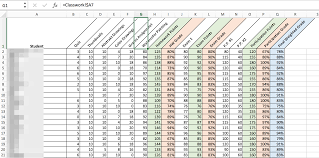Are you struggling to organize your data in Excel? Adding a column to your spreadsheet can make a world of difference.
In this article, we will show you how to easily insert a new column, customize it to your needs, and use formulas and functions to make your data calculations a breeze.
Get ready to master Excel and take your spreadsheet skills to the next level!
The Importance of Adding a Column
You should always consider adding a column when updating your spreadsheet. Adding a column provides a wide range of benefits that can greatly enhance your data organization and analysis.
One of the key advantages is that it allows you to include additional information without disrupting the existing structure of your spreadsheet. This means that you can easily input new data or calculations without having to rearrange or reformat the entire sheet.
Furthermore, adding a column enables you to perform more complex calculations and analysis by utilizing formulas and functions specific to that column.
It also helps in maintaining a clear and logical flow of information, making it easier for others to understand and interpret your data.
How to Insert a Column in Excel
To insert a column in Excel, simply follow these steps.
First, select the column to the right of where you want to insert the new column.
Next, right-click on the selected column and choose ‘Insert’ from the context menu. Alternatively, you can also go to the ‘Home’ tab in the Excel ribbon, click on the ‘Insert’ button, and select ‘Insert Sheet Columns’ from the drop-down menu.
Excel will then insert a new column to the left of the selected column, shifting the existing columns to the right.
You can also use a keyboard shortcut by selecting the column, pressing the ‘Ctrl’ and ‘+’ keys simultaneously, and then selecting ‘Entire Column’ from the dialog box that appears.
That’s it! You have successfully inserted a new column in Excel.
Formatting and Customizing Your New Column
To format and customize your new column, start by selecting the column header and right-clicking on it. A drop-down menu will appear, and you can choose from various formatting options. For example, you can change the font style, size, and color, as well as apply bold, italic, or underline formatting.
Additionally, you can adjust the column width and alignment to ensure that your data is displayed correctly. If you want to customize the appearance further, you can explore the ‘Format Cells’ option, which allows you to modify the number format, apply borders, and add cell shading.
Don’t forget to save your changes and regularly update the formatting to keep your spreadsheet looking professional and organized.
Using Formulas and Functions in Your Added Column
When working with your added column, be sure to utilize formulas and functions to automate calculations and streamline your data analysis. Excel offers a wide range of formulas and functions that can help you perform complex calculations with ease.
Whether you need to calculate sums, averages, or find the maximum or minimum values in a range of cells, formulas and functions are the key to saving time and effort. You can use formulas to perform mathematical operations on your data, such as adding, subtracting, multiplying, and dividing.
Functions, on the other hand, are pre-built formulas that perform specific tasks, such as finding the average of a range of cells or counting the number of cells that meet certain criteria.
Tips and Tricks for Efficient Column Management
Make sure you organize your columns effectively and use shortcuts to improve your efficiency in managing your spreadsheet.
One tip for efficient column management is to use the autofill feature. Instead of manually typing the same information over and over again, simply enter the first value in a column and then drag the fill handle down to automatically fill in the rest of the cells.
Another useful trick is to use the freeze panes option. This allows you to keep certain rows or columns visible even when scrolling through a large spreadsheet. To freeze columns, select the column to the right of where you want the freeze to start, go to the View tab, and click on Freeze Panes.
These tips and tricks will save you time and make working with columns much easier.
Conclusion
Adding a column to your Excel spreadsheet is a simple but essential skill that can greatly improve your data organization and analysis. By following the steps outlined in this article, you can easily insert a new column, format it to your liking, and use formulas and functions to perform calculations.
With these tips and tricks, you’ll be able to efficiently manage your columns and make the most out of your Excel experience.









